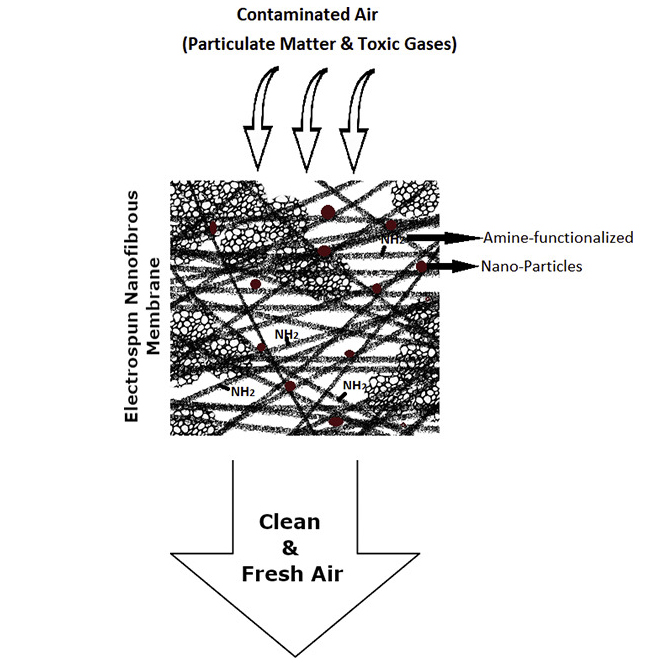© Copyright 2020 Foshan Membrane Technology Co., Ltd. All rights reserved. Sitemap
Although wide ranges of fibrous filters are available, tailoring mechanically robust, and multifunctional (adsorb toxic gases, potent antibacterial, anti-corrosive, etc.) polymeric nanofibres has presented unusual potential for use in many novel filtration applications. Among the several nanofibre production techniques that have evolved over the past several years, electrospinning is considered the most promising, simple and highly productive process. Additionally, nanofibres with well-defined surface properties can be produced by chemical/physical activation using various activation agents/dopants based on the available functional groups. This ability to modify the surface properties of nanofibrous membrane, serve as an effective platform for toxic gas adsorption, and other related filtration applications. This review will present a brief overview of electrospinning polymeric materials, details of already existing air filtration/purification technologies and the advances/practical options through the novel nanofibrous/nanonet membrane (benefits and drawbacks) to enlarge the potential applications of nanofibrous membrane for an enhanced air filtration/purification performance.
尽管可以使用各种各样的纤维过滤器,但定制的机械坚固性和多功能性(吸附有毒气体,有效的抗菌,防腐蚀等)聚合物纳米纤维在许多新型过滤应用中依然具有非凡的潜力。在过去几年中发展起来的几种纳米纤维生产技术中,静电纺丝被认为是最有前途,最简单且生产效率最高的工艺。另外,可以基于可用的官能团,使用各种活化剂/掺杂剂,通过化学/物理活化来生产具有明确定义的表面性质的纳米纤维。这种改变纳米纤维膜表面性能的能力,可作为有毒气体吸附和其他相关过滤应用的有效平台。这篇文章将简要介绍静电纺丝聚合物材料,已经存在的空气过滤/纯化技术的详细信息,以及通过新型纳米纤维/纳米膜(优点和缺点)的进步/实践选择,以扩大纳米纤维膜在空气过滤/净化性能、增强纤维方面的潜在应用。

Published: 2021
Journal :Colloid and Interface Science Communications
Impact Factor:2.831
Paper link: https://www.sciencedirect.com/science/article/abs/pii/S2215038220300558